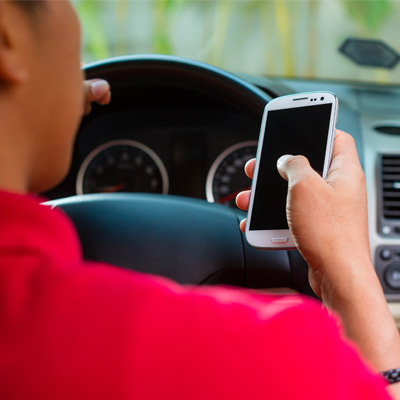Weapons of Mass Distraction
 “Distracted Driving” is receiving a lot of attention these days, particularly the alarming statistics of death and injury caused by drivers who are talking or texting on cell phones. Forty states have already banned cell phone use while driving and, starting today, Oct. 1, Florida will do the same.
“Distracted Driving” is receiving a lot of attention these days, particularly the alarming statistics of death and injury caused by drivers who are talking or texting on cell phones. Forty states have already banned cell phone use while driving and, starting today, Oct. 1, Florida will do the same.
According to National Highway Traffic Safety Administration (NHTSA), over 3,000 people annually are killed as a result of distracted driving. They also cite that teens and young adults are the largest proportion of drivers who are involved with fatalities directly related to cell phone use while behind the wheel: a whopping 21 percent of all car crash fatalities of 15 to 19 year olds can be blamed on driving while using a cell phone. A recent study by the Virginia Tech Transportation Institute (VTTI) showed that someone texting, dialing or grabbing the phone while driving is three times as likely to crash than a driver who is not distracted (www.Distraction.gov).
It could be argued that Florida is slow to jump on board with this initiative and some argue that while passing the law is a good first step, it may not be enough. “It’s important because it is the first step towards creating a primary law,” said Joe Steward, Community Traffic Safety Team Program Coordinator in DeLand (District 5, Florida Department of Transportation). “Honestly, it will not make a big difference. Florida law applies only to secondary violation…and the law also does not even apply to drivers in stopped vehicles. Those of us who grab our iPhones to check an email the minute traffic slows or whenever we stop at a light can still text legally when behind the wheel.” In other words, breaking the law that begins today is a secondary offense, requiring an officer pull over an offender for another traffic infraction (e.g., speeding, running a stop sign) before issuing the $30 fine. And being able to use your phone while stopped at a signal or in a traffic jam isn’t sitting well with those who wish to enact tougher legislation on the matter.
If the stats and police enforcement don’t scare some “straight” then watching a recent documentary short by Werner Herzog might do the trick. “From One Second to the Next” is a 35-minute film that debuted on YouTube this summer. Four major wireless carriers—AT&T, Verizon, T-Mobile and Sprint—partnered on the film project that stemmed from Herzog’s work on 30-second commercials for anti-texting and driving. It has scored millions of views and made a significant impact on raising awareness about distracted driving. The raw emotion of the film comes from people who have been impacted as the driver at fault, the victims left with shells of their former lives, or the family members who’ve needlessly lost loved ones. They are unified in their message: don’t text and drive.
by Trish Wieland



